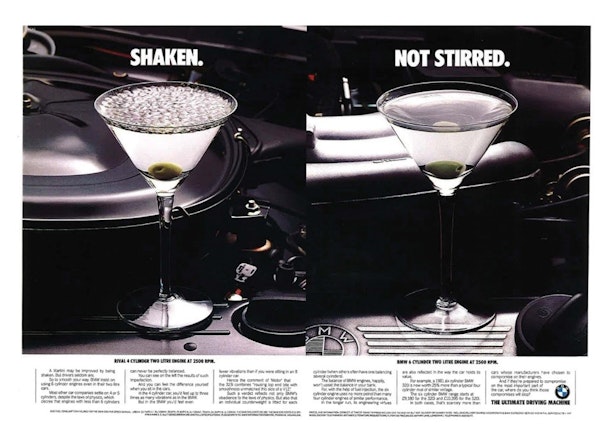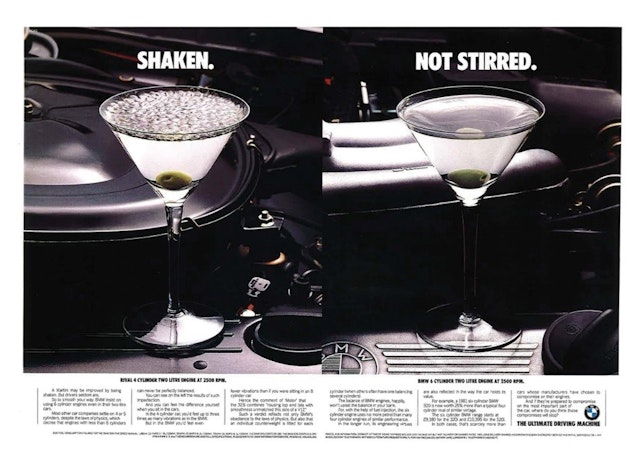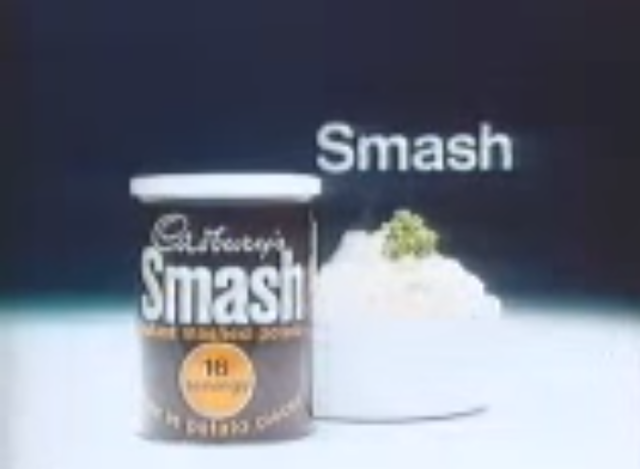100 years of advertising in 10 types of ideas
This year the IPA celebrates its Centenary anniversary. Since its inception 100 years ago, thousands upon thousands of advertisements have been created, but WCRS believes that it is possible to catalogue all of these into 10 simple themes.

100 years of advertising in 10 types of ideas
100 years of advertising. Millions of ads. And one neat way to order them all in 10 types of ideas. Here we go…
1. Expressing Personality
Ideas where the way the brand speaks is more important than what it says
These ideas often bypass the rational part of the brain altogether. They are ideas that are inseparable from a brand’s tone of voice, design, imagery, language or brand world. From the anarchy of Tango to the brevity and wit of the Economist’s headlines. Another great example of a brand with an unwaveringly distinctive personality is Chanel No.5’s, whose advertising – historical to present day – consists of little more than a pervading sense of elegance and sophistication.

2. Name Fame
Ideas that aim to put brands at the front of our minds and on the tip of our tongues
One of the most powerful ways of doing this is by hammering the name into people’s minds with the creative equivalent of a sledgehammer. This might be via a visual cue (Silk Cut), brand iconography (The Jolly Green Giant), or a catchy jingle (Shake n’ Vac). Another famous example involved embedding a number into British brains. Our iconic 118 118 runners campaign helped ‘118 118’ spring to mind more readily than the other 40 directory numbers that launched at the same time, and resulted in the service becoming market leader at launch.

3. Getting Emotional
Ideas that stir deep emotions in the hearts of their audience
Modern neuroscience reveals the importance of emotion. In fact, often the rational brain is simply post-rationalising what has already been decided emotionally. Some advertising attempts to own life’s grand emotional themes. Coke and love. Johnnie Walker and progress. Axe and sexual success. The below ad is less grand in its ambition, but extraordinarily emotive in the way it captures a story. The 1980s J.R. Hartley ad pulls at the heart strings to remind us that the Good Old Yellow Pages isn’t just there for the nasty things in life.

4. Remaining Rational
Ideas arising from a concrete fact about the brand
Originally stemming from the American “salesman” or “persuasion” model of advertising, these ideas have evolved into some of the most creative and memorable ads of the last 100 years. Guinness being good for you. Bouncing balls to evoke the amazing colour of the Sony Bravia. The Van Damme splits showing the precision engineering of Volvo trucks. Or our The Ultimate Driving Machine idea for BMW; a simple claim about a car that helped justify a price premium for over 30 years.

5. Call To Action
Ideas defined by the precise behavior they hope to elicit, or problem they aim to solve
Roll up. Roll up. Do this now. The call to action. Together with the rationalist persuasion mode, this is the oldest form of the advertising idea and finds modern adherents in (for example) Nudge theories. Often the desired action is merely added on the end of ads, although sometimes is the very heart of the idea; take Sainsbury’s ‘Try Something New’, or American Express’ ‘Small Business Saturdays’ promoting people to shop at their local independent stores on a particular day. And below we go right back to the 1910s to one of the most famous ads of all time, from the British Government in WW1.

6. Reframing the Debate
Ideas that anchor the brand to a completely new reference point
Thinking about things from a different angle can reframe how people view a brand (or the world). These are surprising ideas that make people think again, and which fly in the face of accepted wisdom. Polaroid not just being a camera, but a social lubricant. The Orange Gold spots that urged people to turn their mobiles off rather than turn them on. And the Persil campaign below, which challenges the age-old wisdom that cleanliness is good while dirtiness is bad, by proclaiming "dirt is good".

7. Going After The Enemy
Ideas that audaciously position the brand by depositioning its competitors
These are challenger brand ideas. Not just in the sense of taking a different market position to the competitor, but in terms of making the fight public. Avis ingeniously made a virtue of being no.2 in the market by claiming "we try harder". The American Net 10 campaign uses humour to claim the competition is “more evil than evil” (quite a claim!). The below 1970s ad for Smash is the UK's most popular ever advertising idea. And, peeling back the charm and humour, is not just saying potatoes are stupid, but that the people who eat them are too.

8. Company Belief
Ideas that represent the mission of the brand owner and often have a moral purpose
These ideas have been in vogue over the last ten years, given the cultural desire for authenticity and the internet’s ability to get to the people behind the brand. From consumer championing seen in Sky’s ‘Believe in Better’ to the explicitly ethical, as demonstrated in Dove’s ‘Campaign for Real Beauty’ and Chipotle’s ‘Cultivate a Better World’. The following campaign from the 1920s reflected Cadbury's Quaker owners’ desire to provide good quality low cost homes for workers, and help them escape poverty.

9. Making Something Useful
Ideas that move beyond saying things to doing things
In most cases products are the useful things, and the aim of communications is to point people in their direction. However, this group of ideas are useful in themselves. Not advertising things, but making things that are advertised. Many are digital – such as Nike Fuel’s gamification of running – but interestingly, many are not, such as Salta Beer giving toothless Argentinian rugby players new beer opening teeth! Below is a brilliant example from Burger King. Their audience loved Xbox, so they created a branded game to retail in their stores; advertising people literally paid money for.

10. Channel Choice
Ideas that are inseparable from the context in which they appear
These ideas are defined by the context in which a message is consumed and the channel best placed to deliver it. These include ingenious uses of familiar media, such as Geico’s unskippable pre roll or Pedigree’s K9FM, a radio show for bored dogs left at home. They also include completely new channels, for example Water For Africa’s use of the medium of an African female marathon walker to highlight that women in Africa did this every day. The below poster for Women’s Aid changed as you looked at it; enabling viewers to heal a woman’s bruises by paying attention to her, in turn suggesting we all have the power to stop domestic abuse if we take notice of it.

Matt Willifer is chief strategy officer at WCRS

